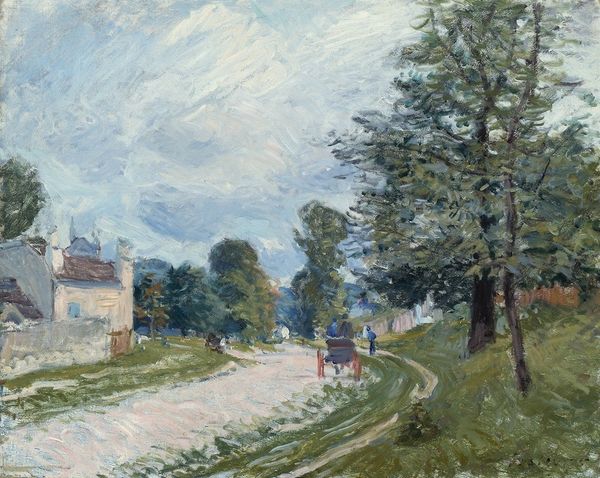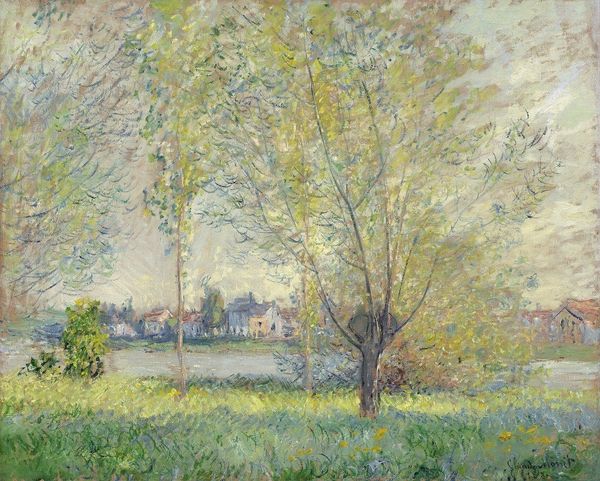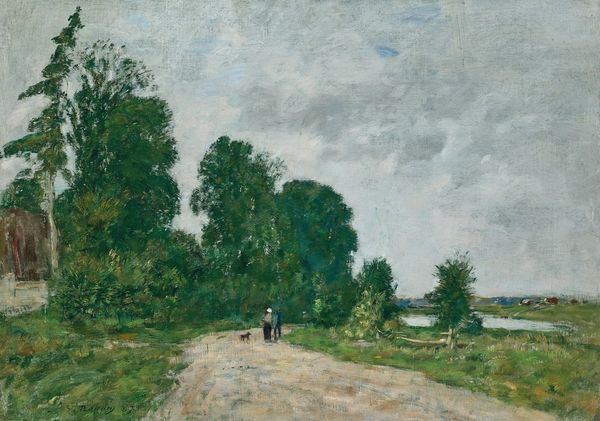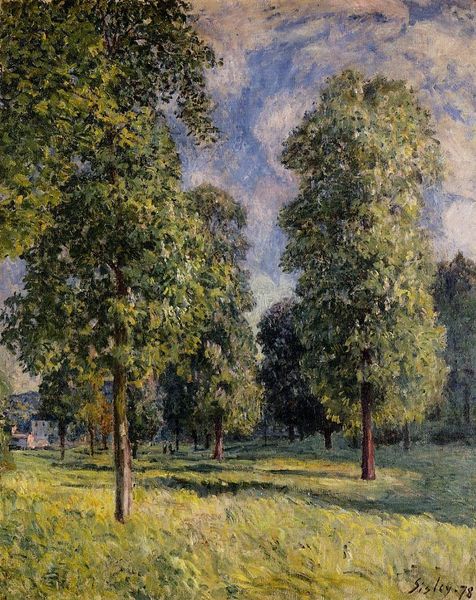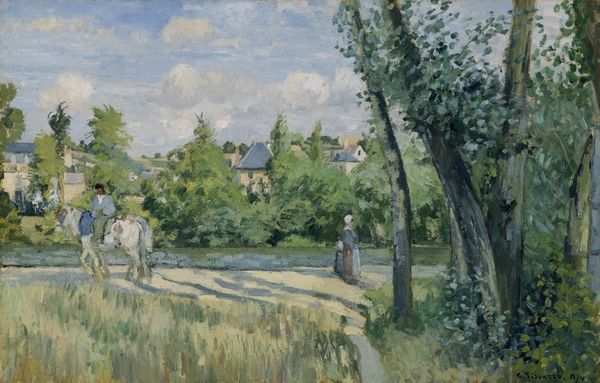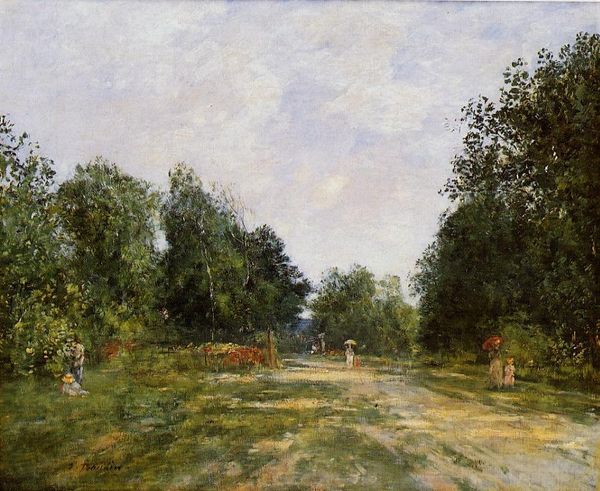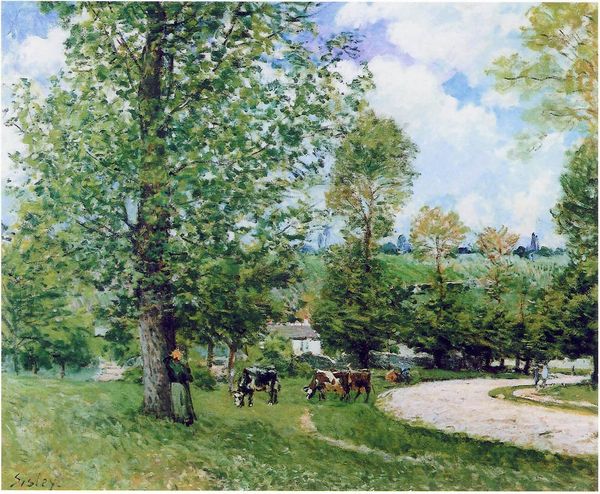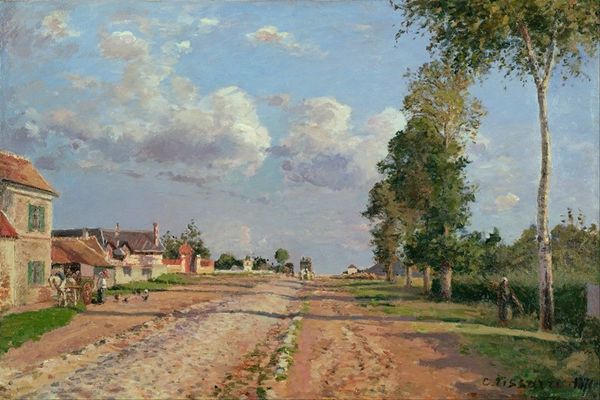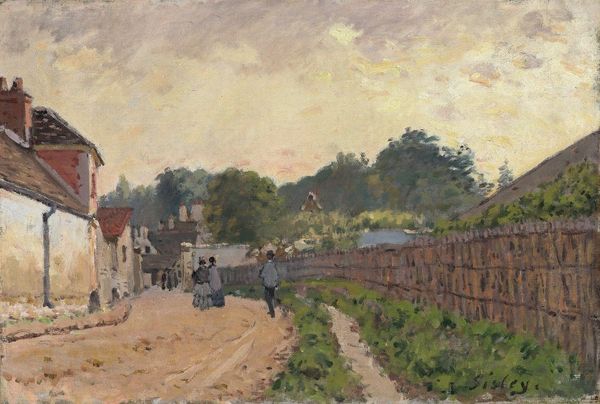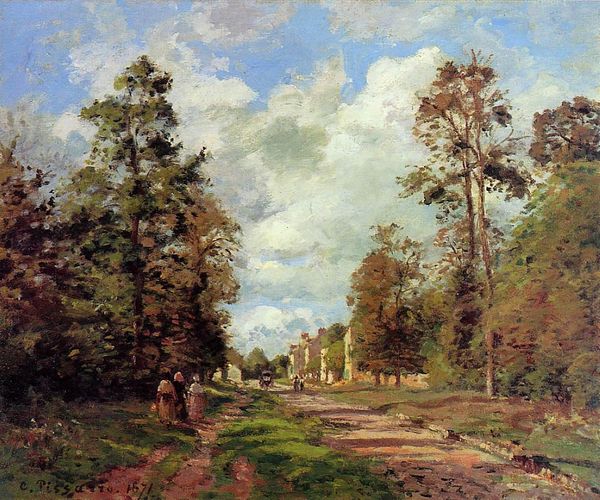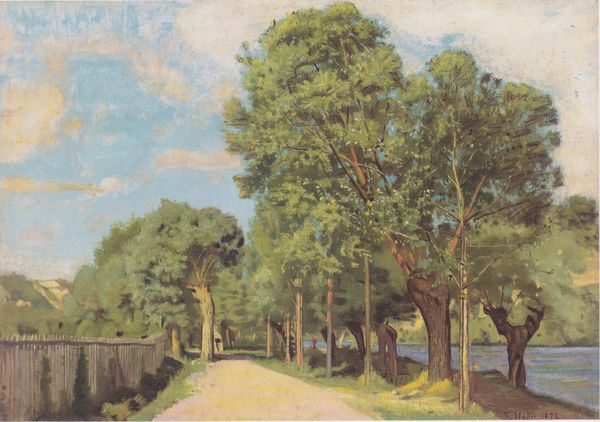
plein-air, oil-paint
#
impressionism
#
plein-air
#
oil-paint
#
landscape
#
oil painting
#
realism
Copyright: Public Domain: Artvee
Curator: Alfred Sisley painted "La route de Marly-le-Roi" in 1875. He, like other impressionists, worked en plein air, capturing fleeting moments in nature with loose brushstrokes. Editor: There's a kind of wistful beauty to this work. The sky seems to dominate, heavy with those churning clouds. There's almost a sense of the road receding, disappearing into the distance. Curator: Absolutely, the location itself plays a crucial role in understanding Impressionism. Marly-le-Roi was a common subject, one that represented a break away from formal Parisian life and industrial modernity, a search for nature amid rapid urbanization. Sisley focused intensely on landscape and light. Editor: And what about the figures traveling down the road? They're not the focus, they are just part of the overall landscape. But in that case, I would wonder if this depiction, even in its casualness, inadvertently reflects the lives and experiences of the everyday workers within the rapid changing social order of the period. Curator: It’s possible, yet consider that during that period, art was not always perceived as representing the marginalized communities; rather, art itself served the privileged. His focus here feels more formal, less about making grand social pronouncements, and more about rendering how light affects form. The lack of detail certainly leaves it open to different interpretations though! Editor: Light, yes, and perhaps memory, too. The haziness, the soft edges of the forms – it evokes a feeling more akin to remembering a place than strictly observing it. Curator: That aligns with the broader project of Impressionism: less about depicting a scene perfectly, and more about capturing the sensory experience of a specific moment in time and to be representative of an ideological shift away from rigid academic training that occurred throughout the era. Editor: Right. In that context, I can agree the focus here extends beyond visual exactitude into capturing a felt experience of being present in that place at that moment, which ultimately can make it very personal for each and everyone’s interpretation. Curator: Indeed. The power of this, and so much Impressionist work, rests in how that personal sensory experience has evolved, over a century later, into cultural impact. Editor: Something as small as a roadside scene turned into a historical mark—a reminder of society’s ever-changing dynamic with the role of an artist. It offers so many layers to peel back as we question our own modern perception of art.
Comments
No comments
Be the first to comment and join the conversation on the ultimate creative platform.
